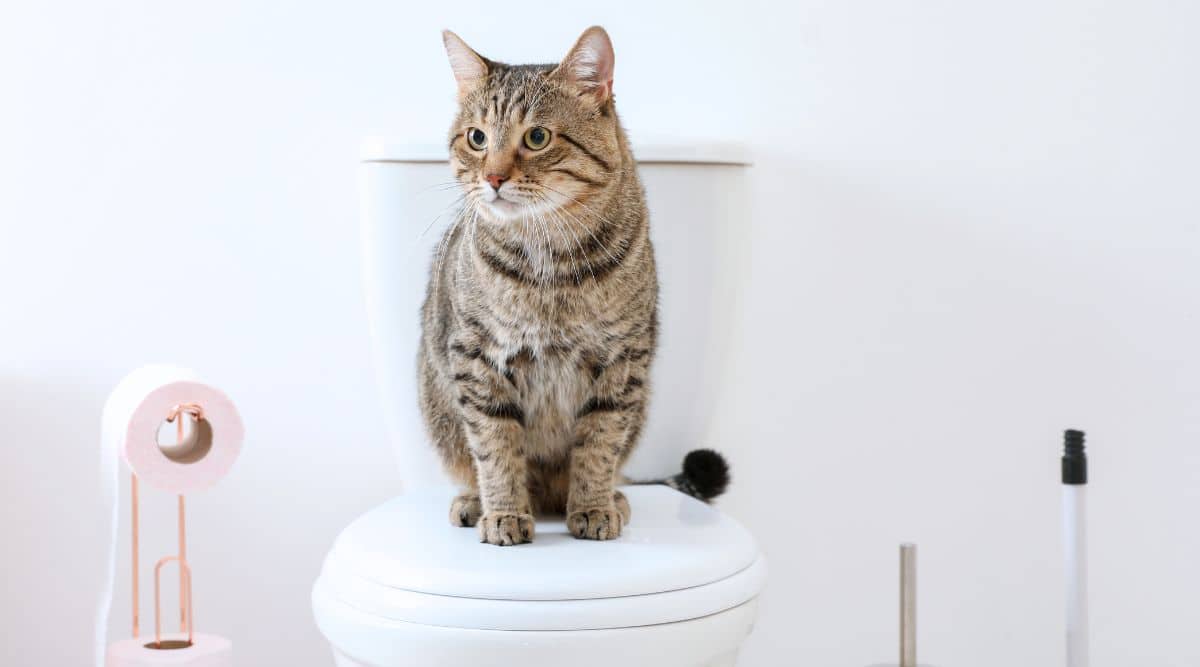We have noticed this post pertaining to Can You Flush Cat Poo or Litter Down the Toilet? directly below on the internet and accepted it made sense to share it with you in this article.

Introduction
As pet cat proprietors, it's important to bear in mind exactly how we dispose of our feline good friends' waste. While it may appear hassle-free to flush cat poop down the bathroom, this method can have harmful effects for both the environment and human wellness.
Ecological Impact
Flushing feline poop introduces harmful virus and bloodsuckers right into the water, presenting a significant threat to aquatic environments. These pollutants can negatively impact marine life and concession water top quality.
Health and wellness Risks
Along with environmental concerns, flushing pet cat waste can also pose health risks to people. Cat feces may have Toxoplasma gondii, a parasite that can trigger toxoplasmosis-- a possibly serious health problem, particularly for expecting women and people with weakened body immune systems.
Alternatives to Flushing
Thankfully, there are safer and more accountable methods to deal with pet cat poop. Take into consideration the following choices:
1. Scoop and Dispose in Trash
One of the most usual technique of getting rid of pet cat poop is to scoop it right into an eco-friendly bag and toss it in the trash. Make certain to use a committed trash inside story and throw away the waste immediately.
2. Use Biodegradable Litter
Opt for eco-friendly feline litter made from products such as corn or wheat. These litters are eco-friendly and can be safely disposed of in the garbage.
3. Bury in the Yard
If you have a backyard, consider hiding cat waste in a marked area away from veggie gardens and water resources. Make sure to dig deep adequate to avoid contamination of groundwater.
4. Mount a Pet Waste Disposal System
Invest in a family pet waste disposal system particularly designed for feline waste. These systems make use of enzymes to break down the waste, minimizing odor and environmental impact.
Conclusion
Liable pet ownership expands beyond supplying food and shelter-- it additionally entails correct waste management. By refraining from purging cat poop down the bathroom and going with alternate disposal approaches, we can minimize our environmental impact and secure human wellness.
Why Can’t I Flush Cat Poop?
It Spreads a Parasite
Cats are frequently infected with a parasite called toxoplasma gondii. The parasite causes an infection called toxoplasmosis. It is usually harmless to cats. The parasite only uses cat poop as a host for its eggs. Otherwise, the cat’s immune system usually keeps the infection at low enough levels to maintain its own health. But it does not stop the develop of eggs. These eggs are tiny and surprisingly tough. They may survive for a year before they begin to grow. But that’s the problem.
Our wastewater system is not designed to deal with toxoplasmosis eggs. Instead, most eggs will flush from your toilet into sewers and wastewater management plants. After the sewage is treated for many other harmful things in it, it is typically released into local rivers, lakes, or oceans. Here, the toxoplasmosis eggs can find new hosts, including starfish, crabs, otters, and many other wildlife. For many, this is a significant risk to their health. Toxoplasmosis can also end up infecting water sources that are important for agriculture, which means our deer, pigs, and sheep can get infected too.
Is There Risk to Humans?
There can be a risk to human life from flushing cat poop down the toilet. If you do so, the parasites from your cat’s poop can end up in shellfish, game animals, or livestock. If this meat is then served raw or undercooked, the people who eat it can get sick.
In fact, according to the CDC, 40 million people in the United States are infected with toxoplasma gondii. They get it from exposure to infected seafood, or from some kind of cat poop contamination, like drinking from a stream that is contaminated or touching anything that has come into contact with cat poop. That includes just cleaning a cat litter box.
Most people who get infected with these parasites will not develop any symptoms. However, for pregnant women or for those with compromised immune systems, the parasite can cause severe health problems.
How to Handle Cat Poop
The best way to handle cat poop is actually to clean the box more often. The eggs that the parasite sheds will not become active until one to five days after the cat poops. That means that if you clean daily, you’re much less likely to come into direct contact with infectious eggs.
That said, always dispose of cat poop in the garbage and not down the toilet. Wash your hands before and after you clean the litter box, and bring the bag of poop right outside to your garbage bins.
https://trenchlesssolutionsusa.com/why-cant-i-flush-cat-poop/

I'm just very interested in How to Dispose of Cat Poop and Litter Without Plastic Bags and I'm hoping you appreciated our entry. Kindly take a moment to share this blog post if you liked it. Kudos for your time. Visit us again soon.
Schedule Estimate